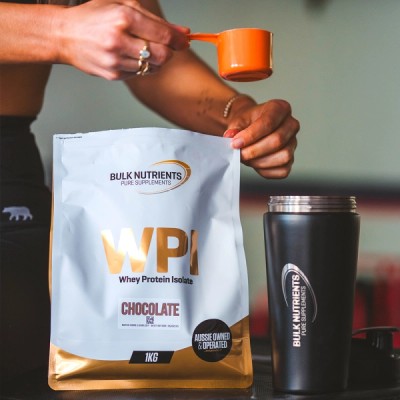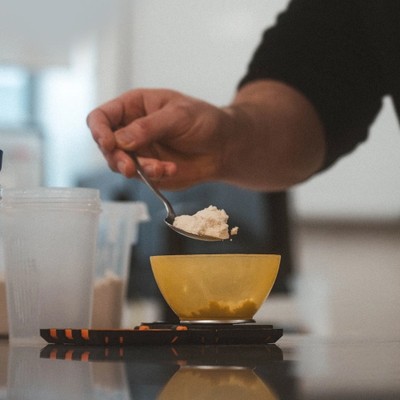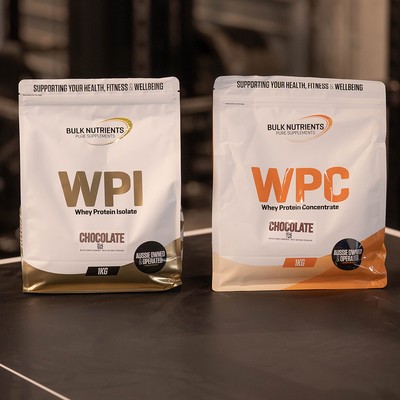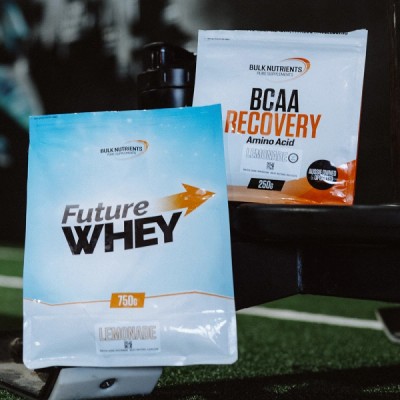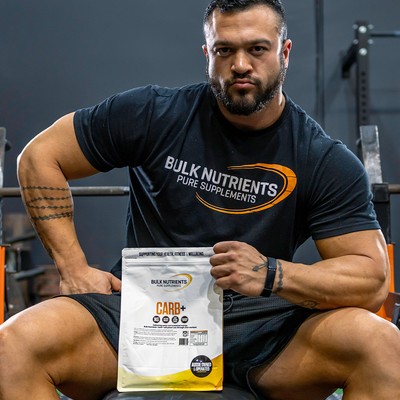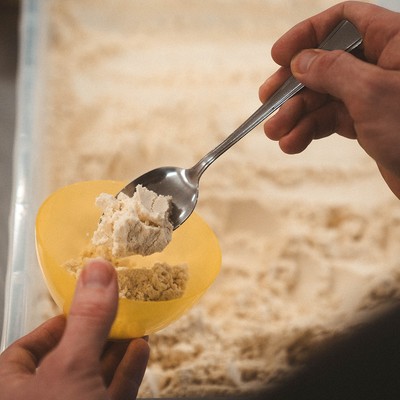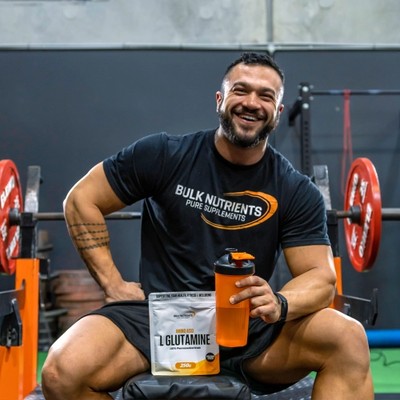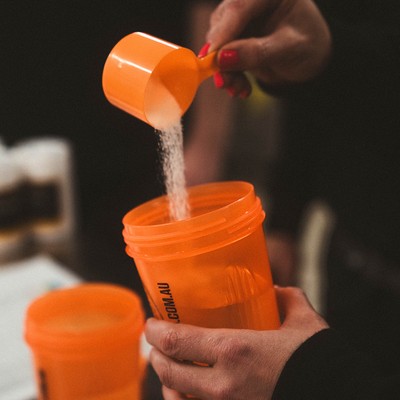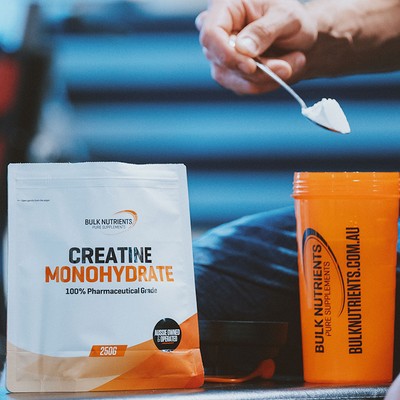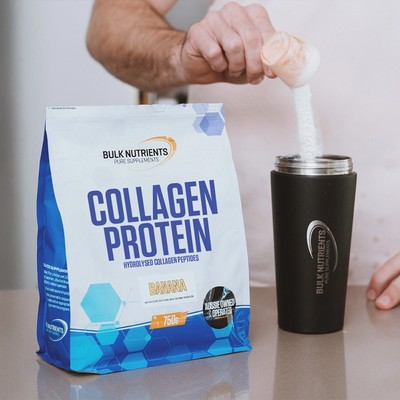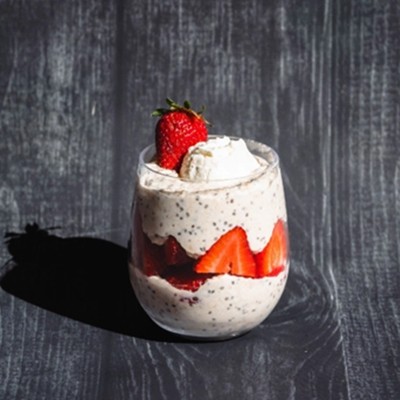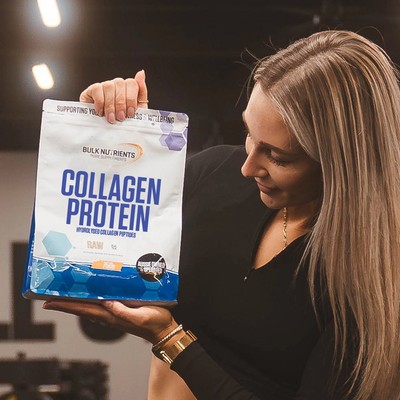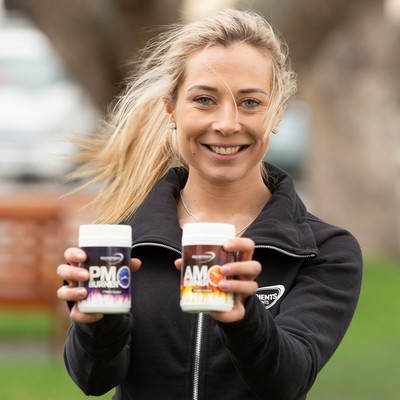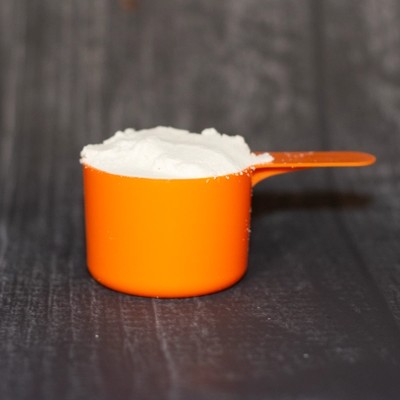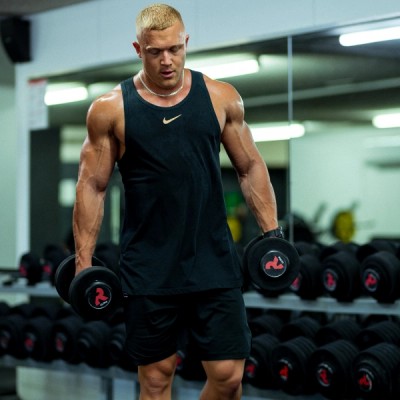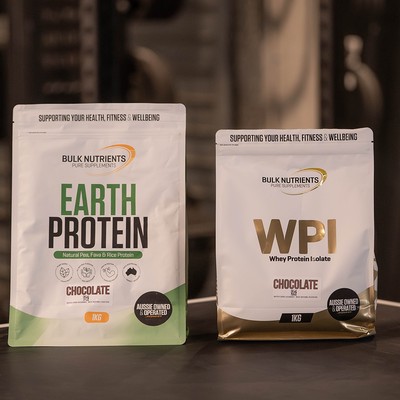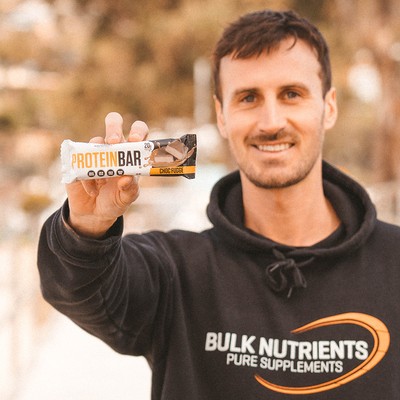Will Blood Flow Restriction Training Make Me Grow More Muscle?

Blood flow restriction training for muscle growth
Firstly, this is what blood flow restriction straps look like when being utilised:
"Blood flow restriction training for a strengthening edge"
The idea is that less blood flowing to the working muscles will cause more muscle growth.
Specifically, it's suggested low-intensity resistance training with blood flow restriction, is just as beneficial for muscle growth when compared to a higher intensity.
And this could be beneficial for all of us, particularly older generations.
Research into older individuals (50-64 years) has found that training at 20-30 per cent of one-rep max's results in the same amount of muscle growth as training at 70-85 per cent of their one-rep max.
And of course, we can all benefit from this; when we're in periods of "deloading" and/or need to take a break from high-intensity training for any number of reasons, muscle growth might be the same.
Onwards, and this aforementioned recent review found:
- For muscle strength comparing low-intensity blood-flow resistance training with high-intensity resistance training, the average difference in 1 rep max was 5.34 kilograms, favouring high-intensity resistance training.
- For muscle torque, high-intensity resistance training was superior. However, when low-intensity blood flow resistance training was compared to just low-intensity resistance training, the blood flow restriction made it better.
- For muscle endurance, a greater increase was seen with blood-flow resistance training compared to endurance training alone.
The researchers concluded:
"Blood flow restriction training produced increases in muscular strength, hypertrophy, and endurance. Comparing low-intensity blood flow resistance training with high-intensity resistance training, high-intensity resistance training was a significantly better training modality for increasing muscle hypertrophy and strength."
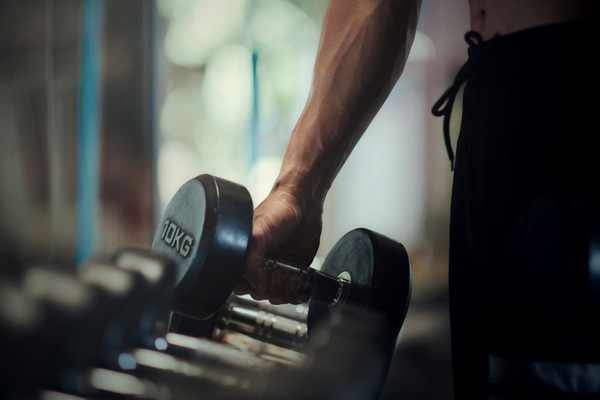
And the next finding is rather interesting:
"However, low-intensity blood flow resistance training was superior when compared with a similar low-intensity protocol."
What we can take away from this is that normal high-intensity resistance training at 70-85 per cent of our one-rep max is better for muscle growth. That's perhaps one of the most important findings.
However, when we switch to a lower intensity, that's when blood flow restriction training in the context of 20-30 per cent of our one rep max could be considered. These findings also provide great advice for older lifters, as the authors state:
"Blood flow restriction training is potentially beneficial to those unable to tolerate the high loads of high-intensity resistance training..."
How does blood-flow resistance training help you grow more muscle?
So we know there are benefits, but how do they actually come about?

Blood-flow resistance training is also called occlusion (blockage) training, given the blood to the muscle is obviously blocked.
And it's this blockage of the vein which increases your blood’s lactate concentration. This means we can train at a lower intensity whilst feeling like we're lifting a whole lot more than we are, without lactic acid coming to spoil the party.
And because our minds are also tricked into believing we're training harder than we are, it signals the pituitary gland to release more growth hormones and other muscle buildings hormones.
When our brains and bodies think they're experiencing a difficult physical challenge, they signal the pituitary gland to release more growth hormones and hormones that respond to muscle growth.
Moreover, the intracellular pressure within our muscles during the blockage activates key muscle growth pathways mTOR and MAPK, and the cell swelling is then thought to trigger muscle protein synthesis.
Some researchers suggest the subsequent muscle swelling induced pathway is one of the key ways in which low-intensity blood flow resistance training allows for its muscle growth effects to occur!
The bottom line with blood flow restriction training
Can help you grow muscle. For those under ~50 looking to gain maximal muscle size, normal training without blood flow restriction at 70-85 of your one-rep max is ideal. However, older individuals (50-64 years) should benefit from training at 20-30 per cent of their one-rep max, and perhaps the same as training at 70-85 per cent of their one-rep max. This is obviously far better for a reduced risk of injury and longevity. Those aged 18-50 can benefit from blood flow restriction training during deload periods or periods of lesser intensity, and still see muscle growth results.

Dayne Hudson
Like many, Dayne was once desperate to lose weight and get into shape. But everyone he asked, everything he read, lead to the same place... nowhere.
His journey started there - researching science journals and completing a Sports Nutrition Specialist qualification so he could make weight loss easier.
References:
- Perera, Edward BSc, MBBS*; Zhu, Xi Ming MBBS, MSc*; Horner, Nolan S. MD†; Bedi, Asheesh MD‡; Ayeni, Olufemi R. MD, PhD, FRCSC†; Khan, Moin MD, MSc, FRCSC† Effects of Blood Flow Restriction Therapy for Muscular Strength, Hypertrophy, and Endurance in Healthy and Special Populations, Clinical Journal of Sport Medicine: November 29, 2021 - Volume - Issue - doi: 10.1097/JSM.0000000000000991
- Karabulut M, Abe T, Sato Y, Bemben MG. The effects of low-intensity resistance training with vascular restriction on leg muscle strength in older men. Eur J Appl Physiol. 2010;108(1):147–155. doi: 10.1007/s00421-009-1204-5.
- Low S. Y., Rennie M. J., Taylor P. M. (1997). Signaling elements involved in amino acid transport responses to altered muscle cell volume. FASEB J. 11 1111–1117. 10.1096/fasebj.11.13.9367345
- Loenneke J. P., Fahs C. A., Rossow L. M., Abe T., Bemben M. G. (2012a). The anabolic benefits of venous blood flow restriction training may be induced by muscle cell swelling. Med. Hypotheses 78 151–154. 10.1016/j.mehy.2011.10.014.

